#mulatto babies
Text

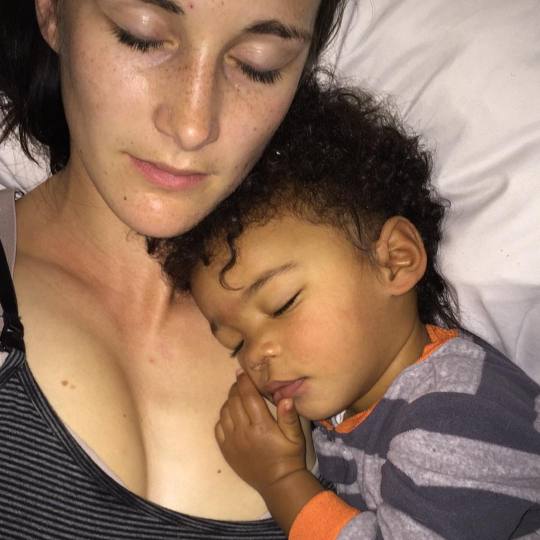

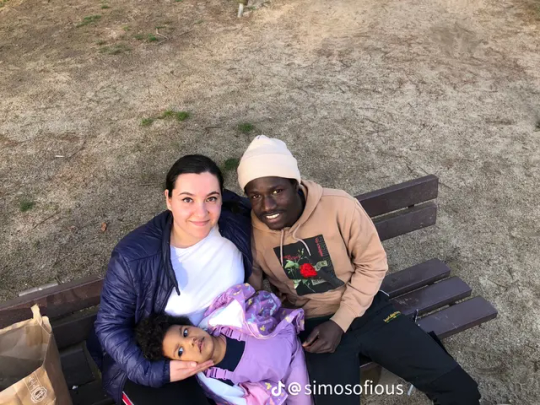




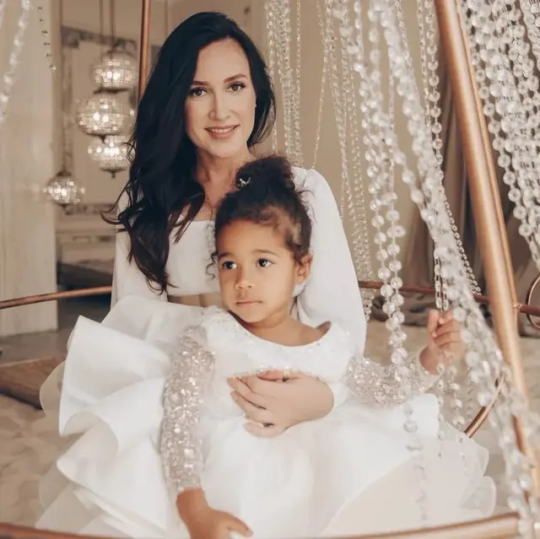
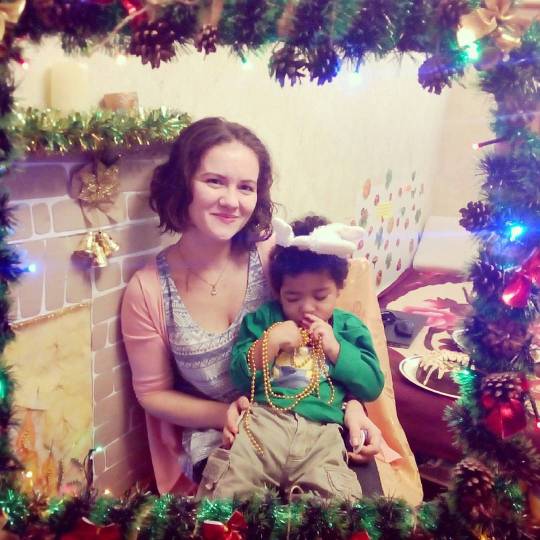
Many white women and their mulatto babies, we don't even need to see their father to know that African blood runs through their veins
#white mothers#mixed families#pregnant#mixed babies#mixed pregnancy#refugees welcome#blacklivesmatter#africanrefugees#africanrefugeeswelcome#mulatto babies
122 notes
·
View notes
Audio
✰Bourgeoiz Music Discovery✰
#music discovery#music#spotify link#spotify#genres#canadian electronic#electra#electro house#electronic trap#pop#music genres#music artists#WHIPPED CREAM#Baby Goth#Latto#song#Do I#Do I (feat. Mulatto & Baby Goth)#Bourgeoiz Music Discovery#MORE MUSIC ON MY BLOG
4 notes
·
View notes
Text
#Ad #NickiMinaj went Full Defense on #Latto over ADVANCES from #lilwayne . Let’s gossip! Follow for more great Content on your favorite #Celebrities Right Here on "How I See It!"
#Sponsored
From Flames to Valor: A Firefighter’s Journey
https://a.co/d/5jTm3HU
"From Flames to Valor – A Firefighter's Journey" takes readers on an enthralling adventure through the courageous life of a firefighter. Amidst raging flames and harrowing rescues, the protagonist faces personal trials and triumphs, painting a vivid portrait of dedication, sacrifice, and bravery. With every turn of the page, readers are immersed in a gripping narrative that unveils the resilience and valor it takes to be a true hero. Prepare to be inspired and moved by this captivating tale of courage and determination.
1 note
·
View note
Note
as a mixed black woman myself, how do you feel about people saying "mixed blacks aren't black, they're mixed" thank you for your time beautiful queen
Honestly, the real problem for me lies in mixed people, especially online, going so hard to assert they aren’t “just black”. When the world looks at my lite brite self, they still see a NEGRESS, lol. You see it in my face and everywhere else, anyone denying you this way fails to realize even non-mixed black people come in all shades. We are the most diverse! The most exotic! I had an experience once, where someone was denying my blackness, so I made it a point to ask random strangers in the park what they thought I was, racially. The answers went like this: black, black, black, and “you’re BLACK and something else”. She had nothing to say afterwards. It’s silly, really, how so many of us are strangers to ourselves.
Our genetic information is so strong that even when we lay with individuals outside our kin, we reproduce ourselves— “you are your Black parent and something else”. Afrika overrides all the other shit, that “something else” becomes unidentifiable. That aside, my mother is a biracial woman and my father is a fully Afrikan man so once I really started understanding how I’m perceived and what’s in my genetic makeup, I don’t care to call myself mixed, I’m just a nigga, a griffe for the folk who subscribe to the weird plantation talk cause that’s really all it is on both sides— weird slave auction separation tactics that somehow make us believe we’re more valuable the further away we get from Blackness. Think about all the weird shit: the people with the million flags in their bios, the people who can’t wait for the “what are you” questions and then make videos about how “annoying” it is, a recording artist calling herself “Mulatto”, the constant propagation of interracial relationships and the mixed baby fetish... child, it’s a lot. I think it’s genocidal, honestly, but that’s for another day. Don’t listen to the coonery, don’t subscribe to it either.
Thank you for calling me beautiful, it’s because I’m Black <3 hehe
12 notes
·
View notes
Text
Here's the albums I listened to in November!
Sonic Jihad - Snake River Conspiracy
Clear Hearts Grey Flowers - Jack Off Jill
Walking With Strangers - The Birthday Massacre
Cex Cells - Blaqk Audio
Every Where is Some Where - K. Flay
Is A Real Boy - Say Anything
Collide With the Sky - Pierce the Veil
Talking to the Dead - Rosemary's Babies
Brain Eaters - Brain Eaters
Hot Man Pussy - Tragic Mulatto
The Greatest Show Unearthed - Creature Feature
Volume 1 - Amigo the Devil
Knife Man - AJJ
Trickstereprocess - Kidneythieves
Sin City - Genitorturers
SKOLD vs. KMFDM - SKOLD, KMFDM
Burn Out at the Hydrogen Bar - Chemlab
Jenny From Thebes - The Mountain Goats
Ladies, Women, and Girls - Bratmobile
Anarchy, My Dear - Say Anything
Stomachaches - Frnkiero and the Celebration (going back to my angsty high school days)
Misadventures - Pierce the Veil
Somewhere at the Bottom of the River Between Vega and Altair - La Dispute
Terror Twilight - Pavement
Wide Awake! - Parquet Courts
All Hail West Texas - The Mountain Goats
Inflammable Material - Stiff Little Fingers
Violent Femmes - Violent Femmes (2 times)
Hello - Poe (I actually got into them before finding out this is Mark Z Danielewski's sister)
Fantasies - Metric
Infinity on High - Fall Out Boy
Incesticide - Nirvana
Honky Tonkin' - Mekons
Second Coming - The Dickies
3 - Violent Femmes
The Question is No - Fastbacks
Ballots - Chumbawumba
Sorry Ma, Forgot to Take Out the Trash - The Replacements
New Wave - Against Me!
POST- - Jeff Rosenstock
A Prayer Under Pressure of Violent Anguish - My Ruin
Feast Scent Beast - Dirt
Beautiful Rat Sunset - The Mountain Goats (on a mission to listen to their whole discography)
Crooked Rain, Crooked Rain - Pavement
Sweden - The Mountain Goats
Nine Black Poppies - The Mountain Goats
Steady Diet of Nothing - Fugazi
It's 11pm so I'm calling it a night for my music of November!!
9 notes
·
View notes
Note
SMELL LIKE TEEN SPIRIT BY NIRVANA!, THIS TIME IS OUR RSA BOIS FIRST OFFICIAL LISTENING TO PUNK WHEN THEY SNEEK IN TO NRC CONSERT AND SEE HOW TO HAVE FUN AND LET LOOSE
Singer!Yuu getting some RSA bois to embraced the more flaws and accept it
SHOW YOUR FLAWS!!!!
Neige got Chen'ya, Philip, and Auran. He looked at his friends he knew since he was a first year "Let's sneak into NRC and watch Yuu's concert!!" Auran didn't agree but Neige pushed it "Oh come on don't be a baby! We'll be there ONLY for the concert and we'll be back before curfew!!" Auran then agreed and they rushed into a dark outfit Neige helped with Auran since he didn't own any. They then rushed to NRC before the concert started. When they got there they saw Yuu just starting the show.
"Load up on guns, bring your friends. It's fun to lose and to pretend. She's over bored and self assured! Oh no, I know a dirty word!"
Neige had star eyes as he watched Yuu began to rock out. Chen'ya was having the time of his life, Philip and Auran were having a outer body experience as the NRC boys pushed to get closer to the singer.
"Hello, hello, hello, how low! Hello, hello, hello, how low! Hello, hello, hello, how low! Hello, hello, hello!"
The boys watched as Yuu made everyone in the crow feel so many different emotions just singing her heart out.
"With the lights out, it's less dangerous! Here we are now, entertain us! I feel stupid and contagious! Here we are now, entertain us! A mulatto, an albino, a mosquito, my libido! Yeah, hey!!"
Auran looked as the crowd pushed them more forward as Neige pulled them too to Yuu the singer rocking on her guitar as Kalim plays the drums for her.
"Yay!!"
Philip was jamming out as Ace and Deuce were throwing out shirts the first years made for the fans at NRC.
"I'm worse at what I do best! And for this gift I feel blessed! Our little group has always been! And always will until the end!"
The crowd was cheering as Yuu got louder and louder, the few boys trying to touch her were pushed back by Jack, Epel and Sebek.
"Hello, hello, hello, how low! Hello, hello, hello, how low Hello, hello, hello, how low! Hello, hello, hello!"
Auran looked as the spot light hit Yuu just right to give her a halo.
"With the lights out, it's less dangerous! Here we are now, entertain us! I feel stupid and contagious! Here we are now, entertain us! A mulatto, an albino, a mosquito, my libido! Yeah, hey!!"
Philip was screaming as Yuu was head banging and began to do the same to them. He doesn't care what his father thinks anymore he wants to be a teen not some preppy asshole!
"Yay!!"
Chen'ya saw Riddle and Trey and went to them informing Neige in case they left early. Neige Saw Vil but decided not to go to him and stay with the two others since this was their first concert.
"And I forget just why I taste! Oh yeah, I guess it makes me smile! I found it hard, was hard to find! Oh well, whatever, never mind!"
Auran was pushed too much in the front and didn't noticed since he was too caught up with Yuu's singing as if he was in a trance. Is this what his father felt like seeing his mother for them first time?
"Hello, hello, hello, how low! Hello, hello, hello, how low! Hello, hello, hello, how low! Hello, hello, hello!"
As Auran was pushed to forward Yuu smiled at him, his heart skipped a beat. Jack gently pushed him back to the crowd, Sebek looked at him he looks familiar...
"With the lights out, it's less dangerous! Here we are now, entertain us! I feel stupid and contagious! Here we are now, entertain us! A mulatto, an albino, a mosquito, my libido! A denial, a denial, a denial, a denial, a denial! A denial, a denial, a denial, a denial!"
Philip did an impulsive thing and threw his shirt on the stage Yuu picked it up and swung it around and cheered. Auran had a rose in his pocket and threw it at her, Yuu was able to catch it and smelled it and shouted at the crowd "THANK YOU ALL I'LL BE HERE FOREVER!!"
When Neige finally found Auran he hurried and dragged both boys before the Headmaster spotted them. Sebek shouted "HE'S A RSA BOY!!" Most of Savanaclaw snapped their heads to them and rushed after them. Auran used some pollen from his flowers to get them off guard as Chen'ya rushed to them turning them invisible. Trey calming the angered Savanaclaw students. Leona told them to knock it off and be quiet since it's after hours now and they need to go back or they'll get in trouble.
At RSA the next day Philip and Auran began to dress like Neige and he was happy his friends wanted to listen to his tracks of Yuu's music. They gushed of all of the different songs and even cried when they realized that the song really connected with them.
156 notes
·
View notes
Text
Do you ever get home & just
I haven't posted a smoking video in a while so thanks for the tag @dokurtybitz2
I'll tag @helianthus-spiritus @ounhime @smokemygames @astr0zombies @subpixie420 @bass-alien @pourpaintmylove @stonerjpeg @whospilledthebongwater @queenpotato-mouth @thetimidtiefling @421druglife @moreeeeweedddd @chubbybluntz @st0nedsl0th @2stonedforlife @420darkangelstoner420 @kdrakk @mulatto-baby @gratefulroses @crystallizedkiki
21 notes
·
View notes
Text
(Picture in the voice of that one meme with the old man going 'Baby boy' at one pic and 'evil' at the second pic)
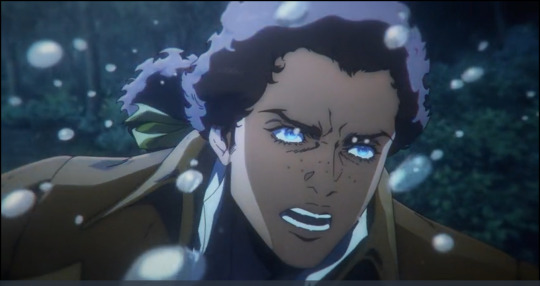
[ID: A screenshot of a scene from Castlevania Nocturne featuring the character Edouard in close-up in a night scene with water flying through the air. /End ID]
My guy Edouard is a mulatto from Haiti (oh hey look at that we actually know where he's from and he's not 'ambiguously brown'). Are his eyes blue? Yes, tragically. But it's at least a shade of blue that works ok with with his skin tone. Also peep the nose and lips.
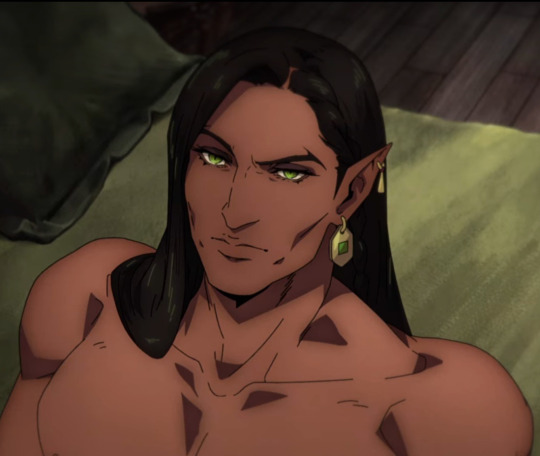
[ID: A screencap from Castlevania Nocturne featuring a close-up of Olrox, a vampire, from the shoulders up nude on a bed. /End ID]
Could I tell what kind of Native Olrox was when I saw him b4 he said anything? No. But I could tell he was Native. But we *do* get to find out where he's from. Does he have pale colored eyes, yes, but again the shades picked work well with his skin tone. Also just lovely nose, lips, cheek bones. Doesn't feel like an ambiguous brown mfer.

[ID: A screenshot from the Dungeon Meshi anime featuring Kabru smiling, winking and giving a thumbs up to the viewer. /End ID]
Go girl give us nothing. Hate that shade of blue, its jarring. Granted given how the mangaka has this man's skin changing colors in the same lighting in the art books like a fucking chameleon in a rave and even making him that weird 'I don't know how to color nonpale people' grey in a few places in the artbooks also just that blue wasn't gonna work anyway.
Also the gross pixie nose. Zero lippage. What fantasy counterpart is this guy from who the fuck knows? Apparently, it wasn't important to make clear or hint at in his design or for him to bring anything that could pin him up directly. Mr. Ambigiously fucking Brown.
Also colorist tropes! Our two plot important brown people gotta have pale colored eyes can't they can't be too ethnic if we have to see them a lot more.
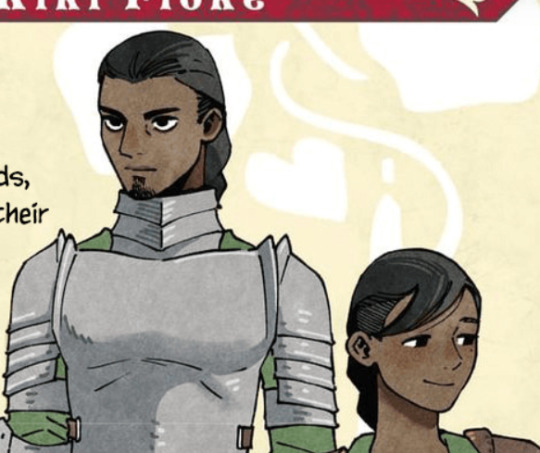
[ID: A crop of a page from the Dungeon Meshi Adventurers Bible showing Kiki and Kaka's heads. There are cut-off words from their page entry on the side and top of the image. /End ID]
Go girl give us nothing but even more! Dark eyes? Good. Everything else just bleh. Nothing. Hell, even the names are as 'no thoughts involved' as the rest.
#nix meows#castlevania nocturne#dungeon meshi#ambiguously brown tm#my beloathed#again i have standards and wont be accepting arguments from people who don't#and yeah I'm aware that there's one fucker who started the headcanon that Kabru supposed to be some kind of southeast asian#but given that person likes to bitch about people not being cool with colorist tropes#and likes to bitch about people being bothered by a character being a slaveowner#their opinions dont fucking matter to me#dunmeshi criticism
5 notes
·
View notes
Text
Slavery - From Against Our Will: Men, Women and Rape by Susan Brownmiller
[tw for rape, violent dehumanisation, anti-black racism, misogynoir]
The American experience of the slave South, which spanned two centuries, is a perfect study of rape in all its complexities, for the black woman's sexual integrity was deliberately crushed in order that slavery might profitably endure.
In contrast to rape during the Indian wars, which was largely casual and retaliatory—men getting even with men through the convenient vehicle of a woman's body—rape under the Patriarchal Institution, as it was named by the patriarchs, was built into the system. The white man wanted the Indian's land, but the coin he extracted from blacks was forced labor. This difference in purpose affected the white man's relations with, and use of, the black woman. Rape in slavery was more than a chance tool of violence. It was an institutional crime, part and parcel of the white man's subjugation of a people for economic and psychological gain.
The Patriarchal Institution took the form of white over black but it also took the form of male over female, or more specifically, of white male over black female. Unlike the Indian woman who was peripheral to the conquest of land, the black woman was critical to slavery. She was forced into dual exploitation as both laborer and reproducer. Her body, in all of its parts, belonged outright to her white master. She had no legal right of refusal, and if the mere recognition of her physical bondage was not enough, the knife, the whip and the gun were always there to be used against her. Forced sexual exploitation of the black woman under slavery was no offhand enterprise. Total control over her reproductive system meant a steady supply of slave babies, and slave children, when they reached the age of six or eight, were put to work; it did not matter whether they were full-blooded or mulatto.
An important psychologic advantage, which should not be underestimated, went hand in glove with the economic. Easy access to numerous, submissive female bodies—and individual resistance was doomed—afforded swaggering proof of masculinity to slaveholding males, while it conversely reduced and twisted the black man's concept of his role.
"Sexually as well as in every other way, Negroes were utterly subordinated," writes historian Winthrop D. Jordan of the slave South. "White men extended their dominion over the Negroes to the bed, where the sex act itself served as a ritualistic re-enactment of the daily pattern of social dominance." Jordan's words are too temperate. "Bed" is as much a euphemism as not, and "ritualistic re-enactment" implies a stately minuet of manners—a vastly in-adequate description of the brutal white takeover and occupation of the black woman's body.
"Lawdy, lawdy, them was tribbolashuns!" an eighty-seven-year- old ex-slave by the name of Martha Jackson told a recorder for the Federal Works Project in Alabama (who wrote down her words in an approximation of her dialect). "Wunner dese here womans was my Antie en she say dad she skacely call to min' he e'r whoppin' her, 'case she was er breeder woman en' brought in chillum ev'y twelve mont's jes lak a cow bringin' in a calf."
Martha Jackson's choice of imagery was grounded in the realities of slavery. Female slaves were expected to "breed"; some were retained expressly for that purpose. In the lexicon of slavery, "breeder woman," "childbearing woman," "too old to breed" and "not a breeding woman" were common descriptive terms. In-country breeding was crucial to the planter economy after the African slave trade was banned in 1807, and the slave woman's value increased in accordance with her ability to produce healthy offspring. Domestic production of slave babies for sale to other slave states became a small industry in the fertile upper South. In
fact, it was observed to be the only reliably profitable slave-related enterprise. Quite an opposite state of affairs had existed in the North before abolition, where slavery had never been profitable. In colonial Massachusetts, one observer has written, slave babies when weaned "were given away like puppies." But the state of Virginia annually exported between six thousand and twenty-thousand homegrown slaves to the deeper South, where the land, the climate and a harsher work load took precedence over fecundity. The Virginia-reared slave, like Virginia leaf tobacco, was always in great demand.
A member of the Virginia legislature used revealing language when he addressed that patrician body in 1831:
It has always (perhaps erroneously) been considered by steady and old-fashioned people, that the owner of land had a reasonable right to its annual profits; the owner of orchards, to their annual fruits; the owner of brood-mares, to their product; and the owner of female slaves to their increase . . . and I do not hesitate to say, that in its increase consists much of our wealth.
The fellow from Virginia, Mr. Gholson, was attempting to make the point that a slaveholder would not mistreat a female slave as he would not mistreat his broodmare, since the "increase" of each needed a period of nurture in order to show a profit. In return for the production of slave babies, the female knowingly bartered for more food and a reduced work load in the weeks before and after birth. But despite Mr. Gholson's protestations, a lightened work load was not an automatic quid pro quo.
Nehemiah Caulkins, a white carpenter who worked for a time on a North Carolina rice plantation, presented this picture of breeder women in an antislavery pamphlet of 1839:
One day the owner ordered the women into the barn, he then went in among them, whip in hand, and told them he meant to flog them all to death; they immediately began to cry out, "What have I done Massa? What have I done Massa?" He replied, "D—n you, I will let you know what you have done, you don't breed, I haven't had a young one from one of you for several months." They told him they could not breed while they had to work in the rice ditches. (The rice grounds are low and marshy, and have to be drained, and while digging or clearing the ditches, the women had to work in mud and water from one to two feet in depth; they were obliged to draw up and secure their frocks about their waist, to keep them out of water, in this manner they frequently had to work from daylight in the morning till it was so dark they could see no longer.) After swearing and threatening for some time, he told them to tell the overseer's wife, when they got in that way, and he would put them upon the land to work.
The Georgia journal of Fanny Kemble, whose husband owned a pair of cotton and rice plantations, records this entry:
The women who visited me yesterday evening were all in the family way, and came to entreat of me to have the sentence (what else can I call it?) modified which condemns them to assume their labor of hoeing in the field three weeks after their confinement. They knew, of course, that I cannot interfere with their appointed labor, and therefore their sole entreaty was that I would use my influence with Mr. [Butler, her husband] to obtain for them a month's respite from labor in the field after childbearing.
Fanny Kemble was unsuccessful in her intercessionary mission. Breeder women were sometimes blatantly advertised as such, for if they were "proven," they could command a higher price. The following advertisement from the Charleston, South Carolina,
Mercury became an abolitionist classic:
NEGROES FOR SALE—A Girl about twenty years of age (raised in Virginia) and her two female children, one four and the other two years old—is remarkably strong and healthy—never having had a day's sickness, with the exception of the small pox, in her life. The children are fine and healthy. She is very prolific in her generating qualities, and affords a rare opportunity to any person who wishes to raise a family of strong and healthy servants for their own use. Any person wishing to purchase will please leave their address at the Mercury office.
It mattered little to the slaveholder who did the actual impregnating, since the "increase" belonged to him by law. Paternity was seldom entered in the slaveholder's record book, and when it did appear, it was strictly for purposes of identification. The female was often arbitrarily assigned a sexual partner or "husband" and ordered to mate. Her own preferences in this most intimate of matters may or may not have been taken into account, depending on the paternalistic inclinations of her master. "I wish the three girls you purchest had been all grown," an overseer wrote to an absent master. "They wold then bin a wife a pese for Harise & King & Nathan. Harris has Jane for a wife and Nathan has Edy. But King & Nathan had sum difuculty hoo wold have Edy. I promist King that I wold in dever to git you to bey a nother woman sow he might have a wife at home."
Sexual activity for the male slave after the day's work was done was considered by the slave and master to be in the nature of a reward, but it is difficult to make such a generalization for the female. The accepted modern authority on slavery, Kenneth M. Stampp, writes, "Having to submit to the superior power of their masters, many slaves were extremely aggressive toward each other." It is consistent with the nature of oppression that within an oppressed group, men abuse women. "We don't care what they do when their tasks are over—we lose sight of them till next day," one planter wrote. "Their morals and manners are in their own keeping. The men may have, for instance, as many wives as they please, so long as they do not quarrel about such matters."
Another slave owner kept marital law and order in the following fashion, as recorded in his diary: "Flogged Joe Goodwyn and ordered him to go back to his wife. Dito Gabriel and Molly and ordered them to come together again. Separate Moses and Anny finally. And flogged Tom Kollock [for] interfering with Maggy Cambell, Sullivan's wife." The narrative of Charles Ball, Fifty Years in Chains, tells of a slave woman who was forced to live with a fellow slave whom she thoroughly detested and feared—and who never stopped reminding her that in Africa he had ten wives! That warm, sustained relationships did develop between male and female slaves in bondage is a most profound testament to what can only be called humanity, which everything in slave life conspired to destroy.
Field laborer, house servant and breeder woman were the principal economic roles of the female slave, but she was also used by her white owner for his own sexual-recreational pleasure, a hierarchical privilege that spilled over to his neighbors ("I believe it is the custom among the Patriarchs to make an interchange of civilities of this kind," wrote a correspondent in Missouri to a New York newspaper in 1859), and to his young sons eager for initiation into the mysteries of sex. The privilege, apparently, was also expected by visitors. "Will you believe it, I have not humped a single mulatto since I am here," an aide of Steuben's wrote to a friend in condemnation of the lack of hospitality at George Washington's Mount Vernon.
The sexual privilege also filtered down to lower-class white males in the planter's employ (overseers with the power of the whip and craft workers with access to the plantation) and to certain black male slaves ("drivers") who were also handed the whip and directed to play an enforcer role within the system. At the top of the hierarchy, setting the style, was the white master.
Nehemiah Caulkins testified:
This same planter had a female slave who was a member of the Methodist Church; for a slave she was intelligent and conscientious. He proposed a criminal intercourse with her. She would not comply. He left her and sent for the overseer, and told him to have her flogged. It was done. Not long after, he renewed his proposal. She again refused. She was again whipped. He then told her why she had been twice flogged, and told her he intended to whip her till she should yield. The girl, seeing that her case was hopeless, her back smarting with the scourging she had received and dreading a repetition, gave herself up to be the victim of his brutal lusts.
Solomon Northup, a shanghaied New York freedman who was forced to spend twelve years on a Louisiana plantation and later published his narrative of bondage, wrote a sympathetic description of a field slave, Patsey, who had to endure her master's "attentions."
Patsey was slim and straight. She stood erect as the human form is capable of standing. There was an air of loftiness in her movement that neither labor, nor weariness, nor punishment could destroy. Truly, Patsey was a splendid animal, and were it not that bondage had enshrouded her intellect in utter and everlasting darkness, would have been chief among ten thousand of her people. She could leap the highest fences, and a fleet hound it was indeed that could outstrip her in a race. No horse could fling her from his back. She was a skillful teamster. She turned as true a furrow as the best, and at splitting rails there was none who could excel her. . . . Such lightning-like motion was in her fingers as no other fingers ever possessed, and therefore it was that in cotton picking time, Patsey was queen of the field.
Yet Patsey wept oftener, and suffered more, than any of her companions. She had literally been excoriated. Her back bore the scars of a thousand stripes; not because she was of an unmindful and rebellious spirit, but because it had fallen to her lot to be the slave of a licentious master and a jealous mistress. She shrank before the lustful eye of one, and was in danger even of her life at the hands of the other, and between the two, she was indeed accursed. . . . but not like Joseph, dared she escape from Master Epps, leaving her garment in his hand. Patsey walked under a cloud. If she uttered a word in opposition to her master's will, the lash was resorted to at once, to bring her to subjection; if she was not watchful when about her cabin, or when walking in the yard, a billet of wood, or a broken bottle perhaps, hurled from her mistress's hand, would smite her unexpectedly in the face. The enslaved victim of lust and hate, Patsey had no comfort of her life.
Northup described one incident in the field when he and Patsey were hoeing side by side. Patsey suddenly exclaimed in a low voice, "D'ye see old Hog Jaw beckoning me to come to him?"
Glancing sideways, I discovered him in the edge of the field, motioning and grimacing, as was his habit when half-intoxicated. Aware of his lewd intentions, Patsey began to cry. I whispered her not to look up, and to continue her work as if she had not observed him. Suspecting the truth of the matter, however, he soon staggered up to me in a great rage.
"What did you say to Pats?" he demanded with an oath. I made him some evasive answer which only had the effect of increasing his violence.
"How long have you owned this plantation, say, you d—d n****r?"
Master Epps chased Northup across the field and then re- turned to Patsey. "He remained about the field an hour or more. . . . Finally Epps came toward the house, by this time nearly sober, walking demurely with his hands behind his back, and attempting to look as innocent as a child."
Patsey's story had a terrible ending. The jealous Epps became convinced that his slave had had relations with a white neighbor. He ordered her stripped, staked and beaten into listlessness. "In- deed, from that time forward she was not what she had been. . . . She no longer moved with that buoyant and elastic step—there was not that mirthful sparkle in her eyes that formerly distinguished her. The bounding vigor—the sprightly, laughter-loving spirit of her youth, was gone."
Narratives such as Northup's, published by the Northern abolitionist press in the nineteenth century, and oral histories of former slaves that the Federal Works Projects Administration collected in the nineteen thirties cast cold light on the life-style of slavery. W h e n the female ex-slave was asked to tell of her experiences, not surprisingly she did not dwell on sex. "Them was tribbolashuns," and a combination of propriety, modesty and acute shame on the part of narrator and recorder must have conspired to close the door on any specific revelations. (Male ex-slaves, because of a freer convention among men, were permitted to discuss the sexual abuse of females.)
But horror at the sexual abuse of enslaved black women was a recurring theme among white female abolitionists. The Grimké sisters of South Carolina and Margaret Douglass and Lydia Maria Child, among others, did not let it rest. They spoke and pamphleteered relentlessly (but alas, delicately—so dictated the times) out of a strong sense of identification with their black sisters in bondage. Margaret Douglass, a Southern white woman who was convicted and jailed in Virginia for teaching black children to read, wrote from prison in 1853:
The female slave, however fair she may have become by various comminglings of her progenitors, or whatever her mental and moral acquirements may be, knows that she is a slave, and, as such, powerless beneath the whims and fancies of her master. If he casts upon her a desiring eye, she knows that she must submit; and her only thought is, that the more gracefully she yields, the stronger and longer hold she may perchance retain upon the brutal appetite of her master. Still, she feels her degradation, and so do others with whom she is connected. She has parents, brothers, sisters, a lover, perhaps, who all suffer through her and with her.
The politically keen Mrs. Douglass, writing to a white audience, then added these lines:
White mothers and daughters of the South have suffered under this custom for years; they have seen their dearest affections trampled upon, their hopes of domestic happiness destroyed. I cannot use too strong language on this subject, for I know it will meet a heartfelt response from every Southern woman. They know the facts, and their hearts bleed under its knowledge, however they may have attempted to conceal their discoveries.*
(*Kenneth Stampp unfairly uses this portion of Mrs. Douglass' letter to buttress his contention that "Southern white women apparently believed that they suffered most from the effects of miscegenation.")
Mrs. Douglass' analysis went further:
Will not the natural impulses rebel against what becomes with them a matter of force? For the female slave knows that she must submit to the caprices of her master; that there is no way of escape. And when a man, black though he may be, knows that he may be compelled, at any moment, to hand over his wife, his sister, or his daughter, to the loathed embraces of the man whose chains he wears, how can it be expected he will submit without feelings of hatred and revenge taking possession of his heart?
The slave's revenge took many forms—although white retribution was swift and certain. A traveler through the South wrote in 1856:
A Negress was hung this year in Alabama, for the murder of her child. At her trial, she confessed her guilt. She said her owner was the father of the child, and that her mistress knew it, and treated her so cruelly in consequence, that she had killed it to save it from further suffering, and also to remove a provocation to her own ill-treatment.
A visitor to Mississippi in 1836 sent a letter to a Northern friend:
The day I arrived at this place there was a man by the name of G----- murdered by a Negro man that belonged to him. [The black man was publicly lynched.] G------ owned the Negro's wife and was in the habit of sleeping with her! The Negro said he had killed him and he believed he should be rewarded in heaven for it.
The narrative of Charles Ball tells of a mulatto slave woman, Lucy, who rebelled against her forced sexual servitude to her white owner and successfully plotted with her slave lover, Frank, to kill him. Charles Ball himself played a role in their apprehension and confession. Lucy and Frank "were tried before some gentlemen of the neighborhood, who held a court for that purpose," and were hanged at a public gallows. "It was estimated by my master," Ball records, "that there were at least fifteen thousand people present at this scene, more than half of whom were blacks; all the masters, for a great distance round the country, having permitted, or compelled their people to come to this hanging."
The case of Peggy and Patrick received considerable notoriety in New Kent County, Virginia, in 1830. This pair of slaves, who were lovers, were condemned to be hanged for murdering their master. Extenuating circumstances caused the local white citizens of New Kent to submit a petition to the governor asking that punishment for the pair be reduced to "transportation."
One black witness whose testimony was solicited declared that
the deceased to whom Peggy belonged had had a disagreement with Peggy, and generally kept her confined by keeping her chained to a block and locked up in his meat house; that he [the witness] believed the reason why the deceased had treated Peggy in this way was because Peggy would not consent to intercourse with him, and that he had heard the deceased say that if Peggy did not agree to his request in that way, he would beat her almost to death, that he would barely leave the life in her, and would send her to New Orleans. The witness said that Peggy said the reason she would not yield to his request was because the deceased was her father, and she could not do a thing of that sort with her father. The witness heard the deceased say to Peggy that if she did not consent, he would make him, the witness, and Patrick hold her, to enable him to effect his object.
Since it was the slaveholdirig class that created the language and wrote the laws pertaining to slavery, it is not surprising that legally the concept of raping a slave simply did not exist. One cannot rape one's own property. The rape of one man's slave by another white man was considered a mere "trespass" in the eyes of plantation law. The rape of one man's slave by another slave had no official recognition in law at all.*
(* Some evidence exists that masters attempted to police, in their own fashion, the more blatant abuses that male slaves committed against females. An 1828 advertisement in the Elkton, Maryland, Press for runaway "Negro George Anderson, about 21 or 22 years of age," declared informatively, "A few days before he absconded he attempted to commit a rape upon a young female of his own color, the punishment for which has caused his running off.")
Moral objections to the "liberties" that the slaveholder and his overseer took as a matter of course were voiced within the oddly angled framework of miscegenation, amalgamation, mixture of the races, licentiousness, degradation and lust. Typically for the power class, the slave's coerced participation in the act was turned on her. Her passive submission—the rule of survival in slavery—was styled as concubinage, prostitution or promiscuity when it was alluded to at all. Even the Northern abolitionists shied away from defining coercive sexual abuse under slavery as criminal rape, preferring to speak emotionally, but guardedly, of illicit passion and lust. Modern historians tend to operate under the same set of blinders.
The patriarchal institution of marriage dovetailed with the patriarchal institution of slavery to prevent perception, by even the most enlightened observers, of a concept of sexual rights and bodily integrity for the female slave. In the nineteenth century, a married woman was considered by law to be the property of her husband, and any abuse to her person was considered, by law, to be an abuse to his property. If the woman was not married, the abuse was to her father's property. But slaves were not permitted to marry legally, and criminal sexual abuse of a female slave (a rape) could not be considered by law an affront to her slave "husband" or slave father, who had no rights of their own. The examples we find in abolitionist literature that express concern over the sexual abuse of female slaves are frequently couched in terms of sympathy for the abused women's husbands! As a Maryland lawyer observed at the time, "Slaves are bound by our criminal laws generally, yet we do not consider them as the objects of such laws as relate to the commerce between the sexes. A slave has never maintained an action against the violator of his bed." Of his bed.
Statutory prohibitions against interracial sex, or more accurately, against the act of sex between slaveholder and slave, were on the books of all the slave states from the time they were colonies of the king. Even in South Carolina, where the slave-trading city of Charleston earned a dubious reputation as the libertine capital of North America (a reputation later claimed by New Orleans), and where "interracial liaisons were less carefully concealed than else- where on the continent/' a grand jury in 1743 took notice of "the too common practice of criminal conversation with Negro and other slave wenches in this province," and scored this conversation—or intercourse—as "an Enormity and Evil of general Ill-Consequence."
But it was "pollution of the white race" and not concern for the rights of slaves that lay behind such pronunciamentos. The laws against "admixture" that white men wrote were not applied to white men. They were applied by white men against white women —as several divorce suits and bastardy charges of the time showed—and they were applied with a special vengeance against those black men who entered into liaisons with white women. (The implications and consequences of this sex-race quadruple standard are still with us. See Chapter 7, "A Question of Race.")
A Louisiana Supreme Court decision of 1851 after some backing and filling proceeded to define concubinage as a "mutual" liaison, although one participant was a slaveholder and the other a female slave bound to him by law and force.
The slave is undoubtedly subject to the power of his master; but that means a lawful power, such as is consistent with good morals. The laws do not subject the female slave to an involuntary and illicit connexion with her master, but would protect her against that misfortune. It is true, that the female slave is peculiarly exposed . . . to the seductions of an unprincipled master. That is a misfortune; but it is so rare in the case of concubinage that the seduction and temptation are not mutual, that exceptions to the general rule cannot be founded upon it.
It is difficult to gain a clear understanding of concubinage as it was practiced in the slave South. I do not mean to argue the point that all sexual liaisons between white masters and black slaves fall within my extended definition of rape, although such an argument is tempting. For many black women, concubinage was the best bargain that could be struck, a more or less graceful accommodation given the hopeless condition of bondage; certainly for some it was as close to emancipation as possible, short of a run for freedom with Harriet Tubman. But first, last and always, concubinage was a male-imposed condition: a bargain struck on male values exclusively, resting on a foundation of total ownership and control. Accommodation in lieu of forcible seizure could bring a variety of amenities into one's life: relative status, pretty dresses, gold earrings, and the hope—always the hope—of manumission for one's self and children. This last must have been held out to the black concubine like a carrot on a stick. Several slaveholder wills survive in which freedom for a favored slave and her children is provided, along with bequests of money and real property. Sadly, but not surprisingly, the terms of these wills were often successfully challenged in the courts by the slaveholder's lawful heirs.
Sexual exploitation of black women by white men was understood as one of the evils of slavery by the abolitionist movement, even though abolitionists were unable to bring themselves to call it rape. Specific cases of concubinage and "amalgamation" reported by travelers through the South were incorporated, with appropriate moral outrage, into American Slavery As It Is: Testimony of a Thousand Witnesses, compiled and collated by the Grimké sisters and Theodore Weld, Angelina Grimké's husband, in 1839. The Grimké testimony, and that of Margaret Douglass, formed the backbone of an i860 antislavery pamphlet edited by Lydia Maria Child. The abolitionist women, in dealing with the sexual behavior of men, were treading on dangerous ground, bound by conventions that decreed that a man's private life was beyond the pale of political scrutiny. "We forbear to lift the veil of private life any higher," wrote Angelina Grimké, whose brother had sired mulatto slave children. "Let these few hints suffice to give you some idea of what is daily passing behind that curtain which has been so carefully drawn before the scenes of domestic life in slaveholding America."
The "few hints" of which Angelina Grimké wrote and spoke were scandalous enough for the times. "The character of the white ladies of the South, as well as the ladies of color, seems to have been discussed, and the editor of the Courier was of the opinion that the reputation of his paper, and the morals of its readers, might be injuriously affected by publishing the debate," a Northern newspaper reported after a Grimké speech—neatly turning the crime of men into a matter of the "character" of women, in the age-old tradition.
In the winter of 1838-1839, while Weld and the Grimkés were compiling their documentary record of slavery in New York, the English actress Fanny Kemble was in residence on a Georgia island plantation, recording her shocked observations in a journal that remained suppressed for twenty-five years. The celebrated and strong-minded Miss Kemble had inadvisedly married a young Philadelphian, Pierce Butler, who inherited a pair of cotton and rice plantations employing more than one thousand slaves. The marriage went badly, but it proved invaluable to history, for Fanny Kemble traveled with her husband to Georgia and wrote down what she saw in the form of letters to a friend.
As Fanny Kemble made the acquaintance of slaves on her husband's plantation, it dawned on her that the complexion of some of them was decidedly light, and for a very specific reason— the plantation's overseer, John King. She described the slave woman Betty:
Of this woman's life on the plantation I subsequently learned the following circumstances. She was the wife of head man Frank . . . the head driver—second in command to the overseer. His wife [Betty]—a tidy, trim intelligent woman with a pretty figure . . . was taken from him by the overseer . . . and she had a son by him whose straight features and diluted color . . . bear witness to his Yankee descent. I do not know how long Mr. King's occupation of Frank's wife continued, or how the latter endured the wrong done to him [italics mine]. This outrage upon this man's rights [italics mine] was perfectly notorious among all the slaves; and his hopeful offspring, Renty, alludfed] to his superior birth on one occasion.
Betty was not the only slave on the Butler plantation whom the white overseer, King, forced into sexual service, Fanny Kemble discovered.
Before reaching the house I was stopped by one of our multitudinous Jennies with a request for some meat, and that I would help her with some clothes for Ben and Daphne, of whom she had the sole charge; these are two extremely pretty and interesting looking mulatto children, whose resemblance to Mr. King had induced me to ask Mr. Butler, when I first saw them, if he did not think they must be his children. He said they were certainly like him, but Mr. King did not acknowledge the relationship. I asked Jenny who their mother was. "Minda." "Who their father?" "Mr. King." . . . "Who told you so?" "Minda, who ought to know." "Mr. King denies it." "That's because he never has looked upon them, nor done a thing for them." "Well, but he acknowledged Renty as his son, why should he deny these?" "Because old master was here then when Renty was born, and he made Betty tell all about it, and Mr. King had to own it; but nobody knows anything about this, and so he denies it."
The Butler plantation operated under absentee ownership for most of the year and the white overseer, King, was left in charge as a virtual dictator. The power of his station, and its sexual privi- leges, extended to those directly below him in the chain of command, the black drivers, who themselves were slaves. Owners, overseers, drivers, neighboring white men—all could force the black woman against her will, and she was held morally responsible for the injury done to her. Fanny Kemble herself started from this premise, but rejected it in time.
Quizzing more of her husband's slaves about the paternity of their offspring and hearing the names King and Walker (a white mill hand) and Morris (a black driver) repeated by many of them, she recorded:
Almost beyond my patience with this string of detestable details, I exclaimed—foolishly enough, heaven knows— "Ah! but don't you know—did nobody ever tell or teach any of you that it is a sin to live with men who are not your husbands?" Alas, Elizabeth, what could the poor creature answer but what she did, seizing me at the same time vehemently by the wrist: "Oh yes, missis, we know—we know all about dat well enough; but we do anything to get our poor flesh some rest from de whip; when he made me follow him into de bush, what use me tell him no? He have strength to make me." I have written down the woman's words; I wish I could write down the voice and look of abject misery with which they were spoken. Now you will observe that the story was not told to me as a complaint; it was a thing long past and over, of which she only spoke in the natural course of accounting for her children to me. I makeno comment; what need, or can I add, to such stories? But how is such a state of things to endure? and again, how is it to end?
Kemble privately circulated a handwritten copy of her journal among her friends and it quickly gained an underground reputation as the most explosive insider's antislavery testament. Lydia Maria Child urged her to publish portions of it, at least, as ammunition for the abolitionist cause but Pierce Butler flatly refused permission. As a slaveholder he thought the journal was unseemly, which it was. As a husband he could withhold consent, by law, to any publication of his wife's, which he did. The journal, Kemble's antislavery views, and her equally daring belief in equality in marriage, figured prominently in Butler's eventual suit for divorce. Butler won custody of their two children and the visitation-rights agreement stipulated that Kemble must do nothing to embarrass him. In 1863, earning her own living again on the English stage,
Fanny Kemble finally published her Georgia journal. By that time the War Between the States was well under way and Harriet Beecher Stowe's novel, based in part on the Weld-Grimke pamphlet, had stolen much of her thunder.
The appointed roles of concubine and breeder woman forcibly progressed to outright prostitution in the last decades of slavery. Traders dispensed with pretense and openly sold their prettiest and "near-white" female chattel for sexual use on the New Orleans market. The cavalier term was "fancy girl." The place was the French Exchange in the grand rotunda of the St. Louis Hotel, and the favored hour was noon. This gaudy fillip to the slave trade was no more than a logical extension of institutional rape, the final indignity.
"Every slaveholder is the legalized keeper of a house of ill-fame," the ex-slave and orator Frederick Douglass thundered to an abolitionist meeting in Rochester, New York, in 1850. Douglass' understanding of the dynamics of slavery far surpassed that of any other single person. That night in Rochester he instructed his audience in the dynamics of sexual oppression.
I hold myself ready to prove that more than a million of women, in the Southern States of this Union, are, by laws of the land, and through no fault of their own, consigned to a life of revolting prostitution; that, by those laws, in many of the States, if a woman, in defence of her own innocence, shall lift her hand against the brutal aggressor, she may be lawfully put to death. I hold myself ready to prove, by the laws of slave states, that three million of the people of those States are utterly incapacitated to form marriage contracts. I am also prepared to prove that slave breeding is relied upon by Virginia as one of her chief sources of wealth. It has long been known that the best blood of Virginia may now be found in the slave markets of New Orleans. It is also known that slave women, who are nearly white, are sold in those markets, at prices which proclaim, trumpet-tongued, the accursed purposes to which they are to be devoted. Youth and elegance, beauty and innocence, are exposed for sale upon the auction block; while villainous monsters stand around, with pockets lined with gold, gazing with lustful eyes upon their prospective victims.
New Orleans was "fully tenfold the largest market for 'fancy girls,'" Frederic Bancroft wrote in his unmatched study, Slave Trading in the Old South. " The prospect of great profit induced their conspicuous display." Beautiful New Orleans! Ambitious slavers chained their prettiest catches to the coffle and headed for the balmy Gulf port. Racing season and Mardi Gras were especially remunerative times. The Hotel St. Louis on Chartres Street was a beehive of activity. Bilingual auctioneers tickled the libido of the sporting men in simultaneous French and English, for a 2 percent
commission. The slave women stood near the auctioneer's hammer and smiled, bedecked in bonnets and ribbons. Sales of two thousand dollars and up were not unusual. Private rooms off the main rotunda of the Exchange were always available for the gentleman who wished to inspect his prospective purchase. Inspection at the French Exchange was a serious matter. "To gamblers, traders, saloonkeepers, turfmen and debauchees, owning a 'fancy girl' was a luxurious ideal."
The master-slave relationship is the most popular fantasy perversion in the literature of pornography. The image of a scantily clothed slave girl, always nubile, always beautiful, always docile, who sinks to her knees gracefully and dutifully before her master, who stands with or without boots, with or without whip, is commonly accepted as a scene of titillating sexuality. From the slave harems of the Oriental potentate, celebrated in poetry and dance, to the breathless descriptions of light-skinned fancy women, de rigueur in a particular genre of pulp historical fiction, the glorification of forced sex under slavery, institutional rape, has been a part of our cultural heritage, feeding the egos of men while subverting the egos of women—and doing irreparable damage to healthy sexuality in the process. The very words "slave girl" impart to many a vision of voluptuous sensuality redolent of perfumed gardens and soft music strummed on a lyre. Such is the legacy of male-controlled sexuality, under which we struggle.
ADDENDUM: THE CLIOMETRICIANS
By running two sets of statistics into a computer and by making a few unsupported, outlandish statements, "cliometricians" Robert Fogel and Stanley Engerman argue in Time on the Cross, their statistical view of slave history, that the sexual abuse of black women by white men was not a common occurrence. Dismissing all known reports collected by the abolitionists, they write:
Even if all these reports were true, they constituted at most a few hundred cases. By themselves, such a small number of observations out of a population of millions could just as easily be used as proof of the infrequency of the sexual exploitation of black women as of its frequency. The real question is whether such cases were common events that were rarely reported, or whether they were rare events that were frequently reported.
This is a "real question" only for someone who does not want to accept how infrequently cases of sexual assault are reported even in this day and age, let alone in the time when Angelina Grimke wrote, "We forbear to lift the veil of private life any higher."
Fogel and Engerman heap scorn on Fanny Kemble for having a distorted vision of slavery based on her "upper-class English" bias. In fact, Kemble's origins were not upper class. She was the daughter of a family of celebrated but impecunious actors who relied on her income—hence her gamble on a marriage to Pierce Butler. Ignoring the reasons why her Journal remained suppressed for twenty-five years, they try to slough it off as "a polemic aimed at rallying British support to the northern cause." It is not a polemic, as the dictionary defines the word, nor was it aimed at the British at the time of its inception. These errors of fact and interpretation could have been cleared up if Fogel and Engerman had read the Journal in its entirety, had read the Butler divorce papers, or had read one of the several biographies of Kemble.
Claiming they deal in facts, not conjecture, the authors, by presenting the results of two tangential computer runs, argue that white men did not as a rule molest black women, coyly adding that in their opinion interracial exploitation "would undermine the air of mystery and distinction on which so much of the authority of large planters rested." The first standard they employ is an analysis of the number of mulattoes reported in the i860 census. Thirty-nine percent of the freedmen in Southern cities were reported as mulatto that year. Among urban slaves the proportion was 20 percent and among rural slaves, who constituted 95 percent of the slave population, the percentage of reported mulattoes was 9.9. Since the overwhelming majority of slaves lived in rural areas, the authors required no sleight of hand to arrive at a figure of 10.4 percent for the census proportion of mulattoes in the entire Southern slave population. From this they conclude, "Far from proving that the exploitation of black women was ubiquitous, the available data on mulattoes strongly militates against that contention."
Several things are wrong here. The progeny of an interracial union can "come up dark" or "come up light," so in itself the color of the offspring is no sure-fire test. Secondly, how were these i860 census reports obtained? In their supplemental methodology volume Fogel and Engerman tell us that the census was taken by "thousands of enumerators" who were "drawn from the category of literate middle- and upper-class whites," and who used the criterion of skin color. We may assume that the freedmen reported their heritage to the enumerators in person, but do the authors suggest that the slaves did the same, or that the industrious enumerators entered the grounds of each and every plantation and counted heads and judged color from shack to shack?
It is reasonable to assume that the owners did all the reporting for their slaves, particularly in the rural areas, and it is reasonable to assume that plantation owners would be most reluctant to admit to the government that they were siring mulatto children, especially since miscegenation was technically against the law. Plantation owners, I am certain, saw what they wanted to see, and reported what they wanted to report to their class allies, those middle- and upper-class white enumerators. Any census statistic on the proportion of mulattoes on a plantation would be a most unreliable figure. In addition, why do Fogel and Engerman assume that a rape, even in a "non-contraceptive society," as they put it, is necessarily going to result in pregnancy and birth? Periods of fertility being what they are, a rapist plays Russian roulette with more than twenty chambers, yet the authors would have us believe he impregnates every time.
This fallacy in thinking also affects the import of their second set of computed facts. From a limited number of plantation records, the authors of Time on the Cross draw up a distribution chart indicating the age of slave mothers at the time they gave birth to their first child. (Unfortunately the cliometricians do not tell us how large a sample was available to them.) Thirty-six percent of all first births took place between the ages of fifteen and nineteen, and an additional 4 percent took place among girls below the age of fifteen. "Some readers might be inclined to stress that 40 percent of all first births took place before the mothers were 20," the authors generously admit—in the fine print of their methodology volume. In their major volume they write only that "the average age at first birth was 22.5, the median age was 20.8."
The median age is the more significant of these two figures, since it shows that there were as many first births below the age of 20.8 as there were above. The average age in the Fogel-Engerman computation is beefed up by each first birth that planter records claim occurred at age thirty-five and over; it does not mean that "most" slave women gave birth to their first child at twenty-two.
From this limited presentation Fogel and Engerman extrapolate, "Only abstinence would explain the relative shortage of births in the late-teen ages," and "the high fertility rate of slave women was not the consequence of the wanton impregnation of very young unmarried women by either white or black men." They hopefully conclude, "The high average age of mothers at first birth also suggests that slave parents closely guarded their daughters from sexual contact with men."
Leaving aside the entire question of the accuracy of slave ages, which does not seem to bother the authors, or the incidence of spontaneous miscarriage and folk-remedy abortions for the very young (information certainly not available), what is most troubling about these first-birth statistics is that nowhere are they matched up against the average age of menarche, the time of the first menstrual period. As it happens, the age at which menstruation begins has been perceptibly declining. In 1960 it fell between twelve and thirteen; however, in 1860 first menstruation usually occurred between the ages of sixteen and seventeen. Not only that, there is evidence in modern medicine and anthropology that fertility in the first few years after the onset of menstruation is comparatively low.
Fogel and Engerman's statistics tell us nothing about the sexual exploitation of black women in slavery. Statistical analysis is a valuable tool when it deals with reported crime. Unreported crime, however, remains beyond the magic of computers.
7 notes
·
View notes
Text







Support African immigrants
#refugees welcome#blacklivesmatter#mixed family#mixed babies#interracial pregnancy#mixed pregnancy#mulatto babies#africanrefugees#africanrefugeeswelcome
73 notes
·
View notes
Note
If Spider's biological father was dark-skinned and Spider was a mulatto (I don't know if this word is considered offensive, but I don't know which one to use here) and closer to a darker shade, would people in the city look more suspiciously at Quaritch and the rest? What if someone threw some racist text at Spider? If Spider had dreadlocks now but he argued them because of his origins and accused Quaritch of not respecting his culture, would Quaritch let him keep them?
In English it is an offensive term, so heads up on that!
If Spider's bio father was black (and I assume that Paz is white in this scenario) then people would assume Q is not the father given that he is also white.
I don't know that they'd be particularly suspicious, they'd just assume there's a baby-daddy who isn't in the picture (true). If Q was saying Spider was his "bio son" they might be a whole lot more suspicious, but Q wouldn't say "bio". And even if Q said Spider was his son (not bio son specifically) then people would probably think Q's the stepdad (true) or that Spider's adopted or something.
If it was an adult being racist to Spider, then Q would very likely square up to them and intimidate them into an apology (context dependant). If there was a lot of racism in the area they lived in and Spider was therefore being caused a lot of distress, I could see Q taking the law into his own hands RDA style to punish the racists.
The locs that Spider has don't look great anyway, given that a child did them and he didn't know anything about maintaining them, so regardless of Spider's race, Q would want them out. In terms of them being a major identifying factor, I do think that's less of an issue if Spider's not white, but it is still an identifying factor. So Q would want them gone regardless. If Spider argued that it's important to his culture, Q would probably say 'and so is the hairstyle I'm doing for you now' and still go back to the hairstyle Spider had as a kid (whatever that would have been). So not much changes there. I do think if down the line when they weren't on the run, Spider wanted to go back to locs, Q would be more amenable to it, but he'd want it done properly this time. <3
5 notes
·
View notes
Note
“I have always had people who wanted to touch my hair and Black girls not accepting me because I'm too light-skinned to fit in with them and white girls who rejected me because I was different than them too.'” /
this comment is so wild to me because she’s not that light to be saying this believably. like imagine laura harrier saying this 😭 it makes about as much sense as lizzo allegedly fatshaming her dancers like???? mind you there are fully black girls that have lighter complexions like storm reid for example. she called out the white girls too but it was def still an irresponsible thing to say because usually when biracial people especially women say something like this it goes hand in hand with “the black girls were jealous because the guys found me more attractive, they were jealous of the attention i got” etc etc. she wasn’t talking about the conflicting socialization of being both black and white which is what the tragic mulatto story usually means she was literally talking about physical appearance like baby there are black girls who are lighter than you. it seems like she’s implying the black girls knew she was biracial so they were jealous of her proximity to whiteness as a result. but hey maybe that really was her experience because it does happen for sure and maybe the particular group of black girls she dealt with did make her feel unwelcome due to her lighter skin but then i feel like she should still have been more explicit about that because i don’t like how it contributes to the messaging that black girls in general all wish they were lighter and their anti blackness makes them miserable toward the biracial girls who they could only ever wish to be 🥴
!!!
5 notes
·
View notes
Note
I hope someday someone treats you the way Izzy Hands treats everyone around him you worthless abuse apologist racist lover.
me when im white and spend my time telling black bloggers that i hope that they get racially abused. just so we can complete the scene, really flesh out the narrative, which slurs do you wanna call me? personally, i find nigger to be a bit cliche, but i feel like there's some old fashion ones we could try out? do you wanna do spook or tar baby? maybe try out mulatto and see how that rolls off the tongue.
18 notes
·
View notes
Text
I haven't posted any video replies since March, sorry about that but I do appreciate everyone that's been tagging me...
If I forget anyone, my bad. It's been a while...
Tagged by @starrybong @dokurtybitz2 @shoobadawoop @mee-o0ww @dinedwithwolves @smokemygames @gabbigabriella @high777frequency @disrespekful (I tag you back)
I'd also like to see @uh-hann @helianthus-spiritus @blazedloser @wanderingnelipot @video-store-clerk @james-bong-im-ona-mission @chesh1recat @caniwishforthis @d00bie-ashtray @421druglife @stonedstoned2thebone @og-lucifers-lettuce @crystallizedkiki @mind-of-a-st0ner @thesquidbat @chenglebop @chloeolson @tattooedzombigirl @lesbianstonerprincess @moreeeeweedddd @mulatto-baby @976-evil @sm0kerscough @bass-alien
69 notes
·
View notes
Note
What’s romantically stubborn? Like, they’re painfully stupid or prideful/in denial?
like this dude is known to be a mulatto menace running wild cheating w everybody in sight, made it clear that he wasn't into anything serious w your stubborn willful proud easily-angered self, and YOU caught HIM w another girl. and you still chasing him. and then this nigga reveals he got MARRIED and there's a BABY ON THE WAY. talkin bout "you know you wasn't the girl for me you dont want to settle down and be a wife". acting like he didn't pretend the wife and baby didn't exist when he was mackin on you a few weeks prior. and you sick in bed crying and throwing up like "why didn't he choose me 🥺" and in between, during, and after the time you learn mans was whole married. with a little boy on the way. you were looking at every man in sight like "ooh he kinda cute 😳" YOU were LOOKING with your NEGRO EYES at a white man named GIDEON trying to see if YOU could SHAG HIM. IN THE 1800s!! DURING A ZOMBIE APOCALYPSE!!
but yeah, basically a romantically messy protag who's chasing crushes left and right and is v emotionally immature when it comes to romance. painfully stupid. in denial. messiest bitch in the house☺
#ask#like this is so melodramatic#i wont tag the book but 1800s zombie apocalypse gives it away#nonblacks dni#this author can't write Black girls who like Black men they're literally all either#mixed or white#ok i dont wanna spoil anymore cause this is the second book#but like.....................................................maam
7 notes
·
View notes
